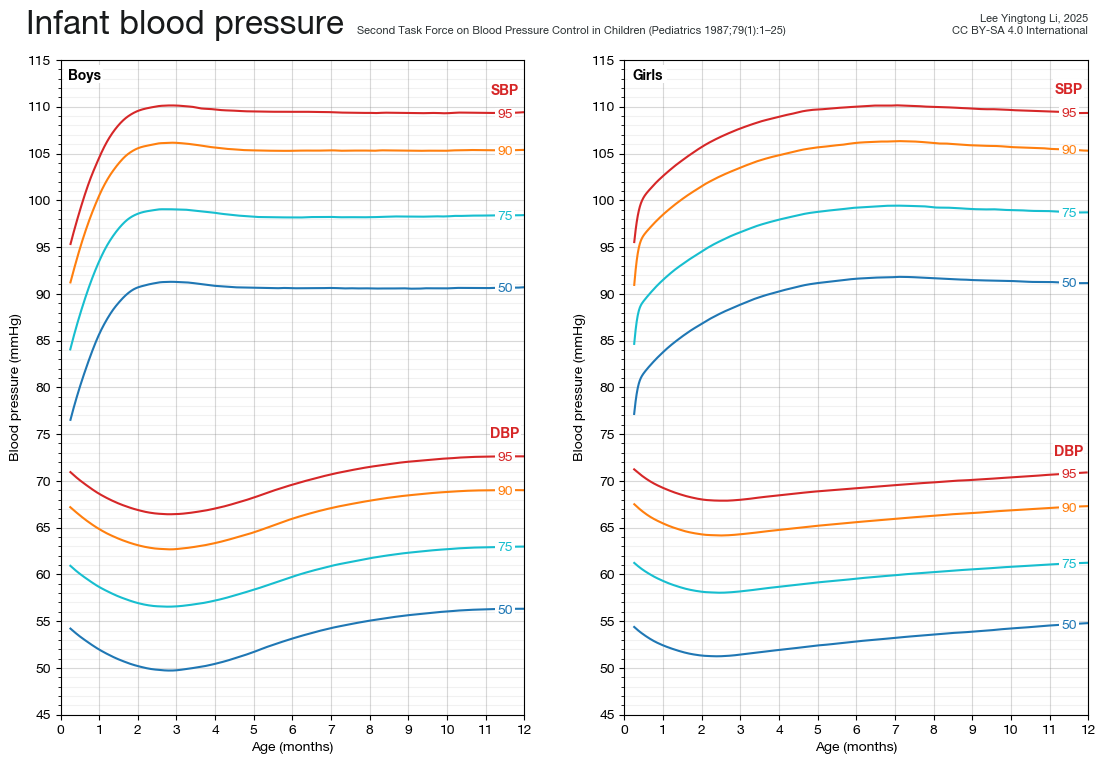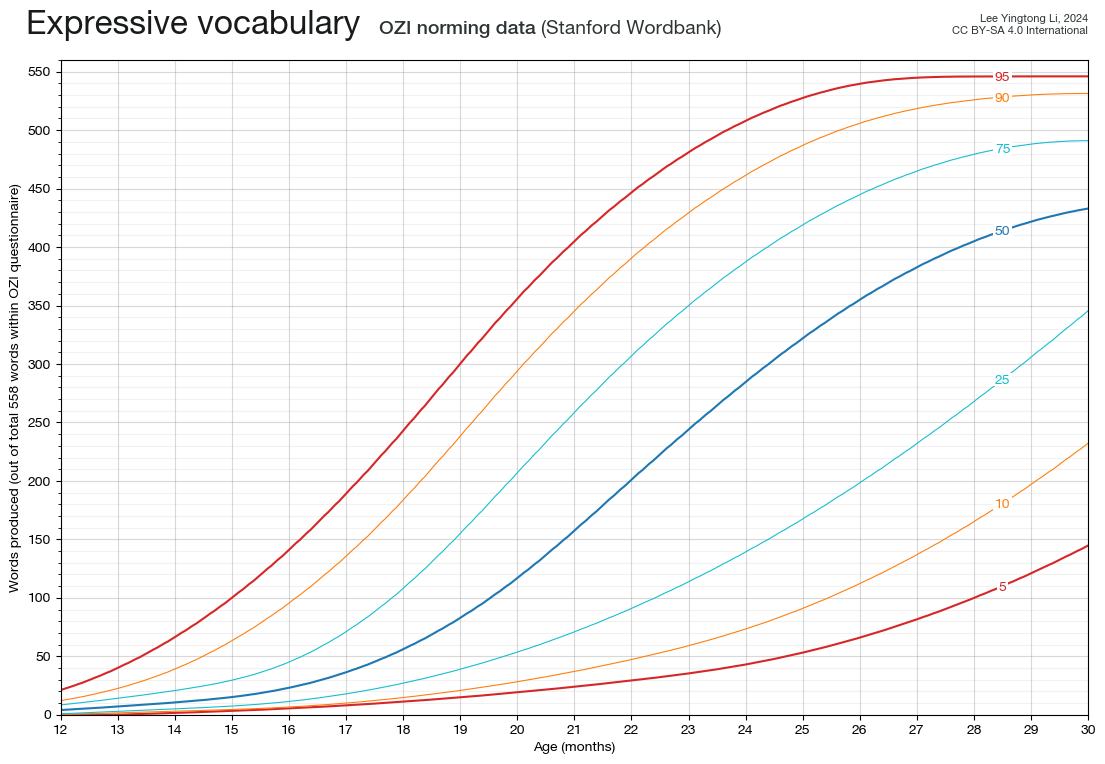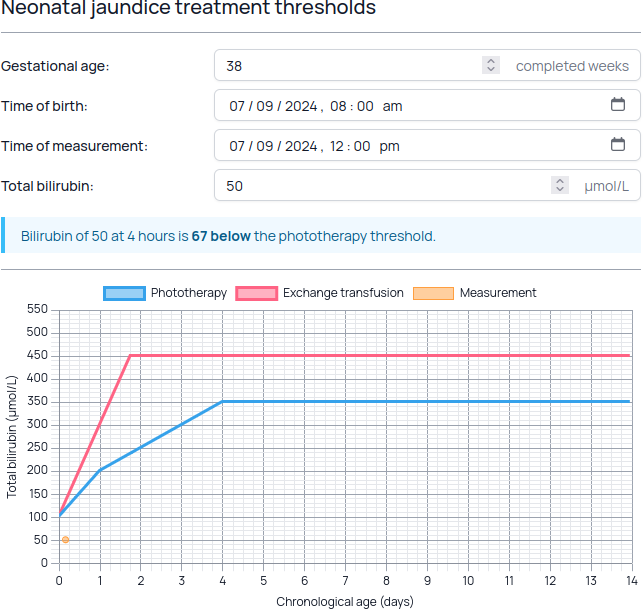-
Infant blood pressure centiles from the Second Task Force on Blood Pressure Control in Children
Below is presented a high-resolution centile chart for blood pressure in infants aged 7 days to 12 months, extracted from the report of the Second Task Force on Blood Pressure Control in Children.1
Methods
The Task Force report1 was obtained from the American… »
-
What is a registrar? – A ‘who's who’ of public hospital doctors
What, exactly, is a medical registrar? As a medical student, I was told ‘a registrar is a doctor in a training program’. A survey of Google search results shows this view is widespread:
… »A medical registrar is a doctor who undergoes advanced training in a
-
Australian English communication growth charts
Below are presented expressive vocabulary ‘growth charts’ and limit ages, for an Australian English cohort, based on the norming samples for the long-form Australian English Communicative Development Inventory (OZI),1,2 and its short form (OZI-SF).3,4
… »Estimated age (months) achieved by proportion Words produced 50% 75% 90% 95% -
Neonatal jaundice treatment thresholds calculator (NICE guidelines)
I present a free open source webapp for calculating neonatal jaundice treatment thresholds (bilirubin ‘nomograms’) based on UK National Institute for Health and Care Excellence (NICE) guidelines. The calculator can be accessed at https://yingtongli.me/bili/.
-
WHO and CDC weight-for-age charts with additional centile lines
Below we present weight-for-age charts in a standardised format based on data from the World Health Organization (birth to 2 years) and United States Centers for Disease Control and Prevention (2 to 18 years). A full complement of centile lines is provided, namely the 3rd,… »
-
Electronic medical record auto-text templates
The templates on this page are released under the CC0 1.0 Universal Public Domain Dedication.
- Asymptomatic hypertension
- Consent for iron infusion
- Consent for IVIg infusion
- Mental state examination (MSE)
- Montreal Cognitive Assessment (MoCA)
- My Health Record access
- Neurological exam, cranial nerves, brief
- Neurological exam, peripheral,
-
What drugs are dosed other than in milligrams?
Notes
This discussion was prepared by examining items on the Australian Pharmaceutical Benefits Scheme (PBS) General Schedule, Repatriation PBS and Section 100 Highly Specialised Drugs (Public Hospital) programs, as at February 2023. I do not warrant that this will remain accurate in the future. Non-PBS… »
-
Monash Medicine in review – Year 5D: MED5101/5103/5105
Placement
With the exception of the Scholarly Intensive Placement, year 5D is taught entirely from clinical sites like the preceding 2 clinical years. Like year 3B and unlike 4C, the focus returns to acute care general hospital medicine, with a focus on preparation for the… »
-
Monash Medicine in review – BMedSc(Hons): MED4301/4302
The Bachelor of Medical Science (Honours), or BMedSc(Hons), is an optional 1-year research degree.1 It can be undertaken any time after year 3B of the Monash medicine course, but by far the most common time to undertake it is between years 4C… »
-
Big list of medical abbreviations
Just a big list of medical abbreviations. Note:
- These abbreviations are based on Australian (and specifically Victorian) usage. Some abbreviations have other meanings elsewhere (e.g. BSL for British Sign Language).
- The inclusion of a abbreviation here does not imply it is recommended to be used.
-
The urea:creatinine ratio in SI units
It is said that a high urea:creatinine ratio is an indicator of a pre-renal cause of acute kidney injury [1]. This is usually discussed in United States units, where urea is measured as blood urea nitrogen (BUN) in mg/dL, and creatinine in mg/dL. The… »
-
Robust Poisson regression in medical biostatistics
Log-binomial and robust (modified) Poisson regression are common approaches to estimating risk ratios in medical biostatistics [1].
I have discussed log-binomial regression in a previous post about generalised linear models. The conceptual basis for using log-binomial regression to estimate risk ratios is straightforward –… »
-
Generalised linear models for medical biostatistics
Recently, I've been doing some statistical analysis using log-binomial generalised linear models (GLMs). Resources on the topic seem to fall largely into 2 categories:
-
Assume you want to know none of the background: ‘Use a log-binomial GLM if you want a risk ratio.’1
-
Assume
-
-
Monash Medicine in review – Year 4C: MED4100/4200
Note: I undertook year 4C in 2020, during the COVID-19 pandemic. Significant disruptions and changes resulted during this year, which may or may not reflect the situation in the future.
Placement
Year 4C, like year 3B, is taught entirely from clinical sites. Unlike year 3B,… »
-
Monash Medicine in review – Year 3B: MED3100/3200
Year 3B is the first clinical year of the Monash medicine course, and is based entirely within hospital sites, not the main university campus. If the transition from year 12 to medical school is a significant change, the transition from preclinical to clinical medicine is… »
-
Monash Medicine in review – Year 2: MED2100/2200
Having settled into the swing of year 1 semester 2, year 2 is in many respects more of the same.
Content
Like year 1, year 2 comprises 2 year-long units, MED2100 (pass-fail) and MED2200 (graded), delivered from the main university campus at Clayton.1
Like… »
-
Monash Medicine in review – Year 1: MED1100/1200
Coming straight from year 12 into university is not a small change. The cohort is much larger, and you may not know many people. You're considered an adult now, and there is a much greater focus on directing your own study.
At the same time,… »
-
Monash Medicine in review – Getting to Monash Clayton
As a proud south-east suburbs Adelaidean, before moving to Melbourne, trains were mythical creatures and anything more than 15 minutes' drive away was farmland. Flying in to Melbourne for an interview, and then for medicine, trying to get to Clayton was an experience. Here's what… »
-
Monash Medicine in review – Admission experience
As described previously, there are both undergraduate and graduate entry pathways into Monash medicine. As a domestic (interstate) undergraduate-entry student, that is what I'll be focusing on here. Note also that I applied in 2017, and while I have endeavoured to update information to… »
-
Monash Medicine in review – Overview of Monash Medicine
Monash University is a public research university in Melbourne, Australia, and the largest university in Australia. The Monash University School of Medicine is the largest medical school in Australia.1
Beginning with the class of 2020, the medical degree awarded is the Bachelor of Medical… »
-
Just Talley & O'Connor things: Part 2
Choice quotes from Talley and O'Connor's Clinical Examination, 8th edition.
Chapter 6
Leo Buerger (1879–1943), New York physician, born in Vienna, who described thromboangiitis obliterans. He was obsessed with expensive cars. (p. 113)
… »John Homans (1877–1954), a professor of surgery at
-
Just Talley & O'Connor things: Part 1
Choice quotes from Talley and O'Connor's Clinical Examination, 8th edition.
… »Our book is not a traditional undergraduate textbook and we are proud of its distinctive features. Learning must be fun! Unlike most other similar textbooks, ours is deliberately laced with humour and historical anecdotes
-
Monash Medicine in review – MED1100 semester 1
New edition available
This post is quite outdated, and I've written a revised series here. For the curious, the original text of this post is below.
So let's suppose you've just graduated Year 12, got an interview offer for undergraduate medicine at Monash, and… »
-
Monash Medicine in review – Interviews and offers
New edition available
This post is quite outdated, and I've written a revised series here. For the curious, the original text of this post is below.
So let's suppose your fresh out of Year 12, or maybe a gap year, armed with a (fingers-crossed… »


